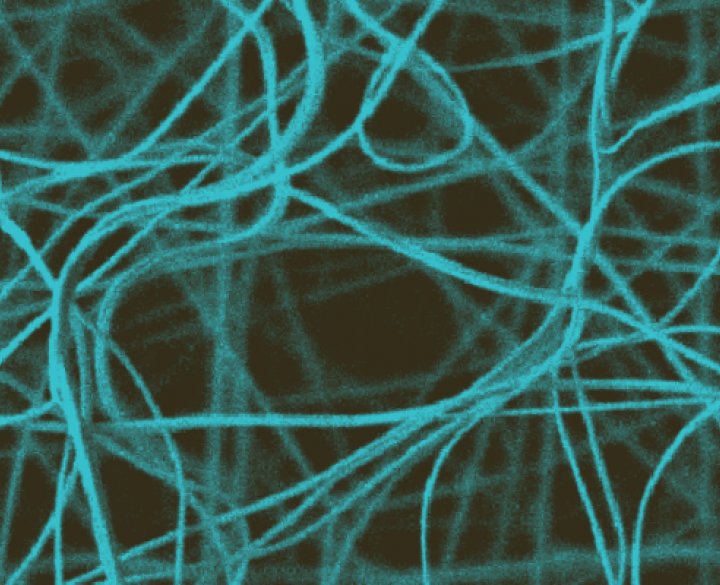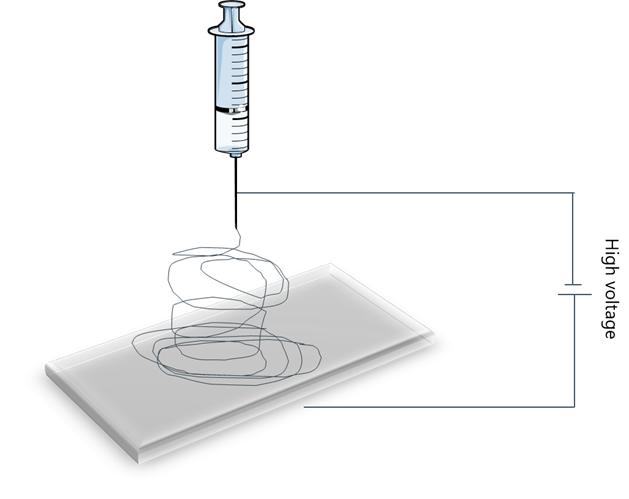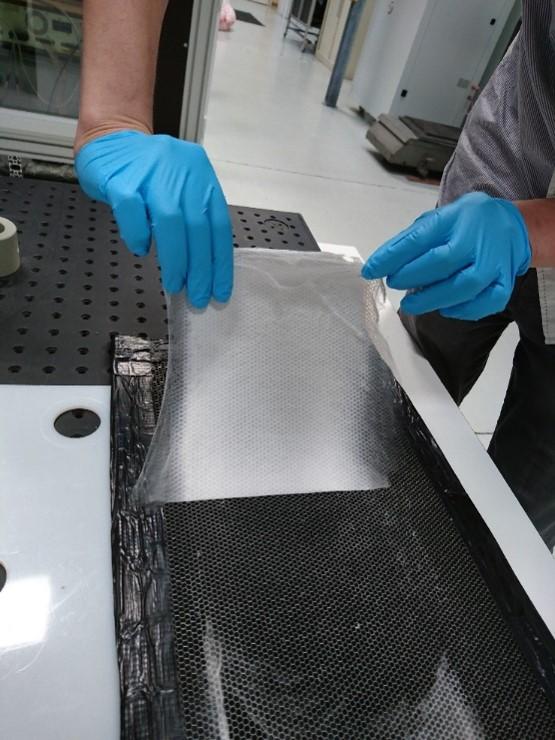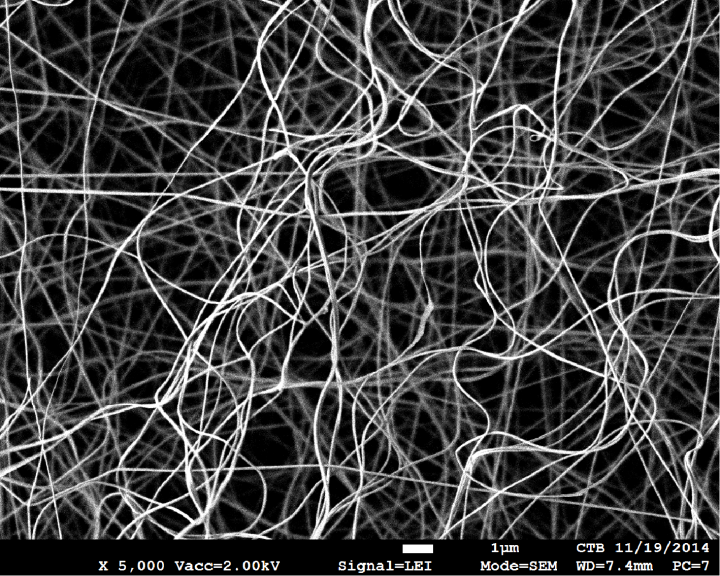Electrospinning is a simple and reliable technology to produce non-woven polymer membranes consisting of fibers with diameters down to a few nanometers. The technique involves charging and ejecting a polymer solution under a high-voltage electric field to form a filament. This filament is then recovered on a collector and forms the membrane. Due to the small size of the ejected fibers, the produced membranes exhibit high surface-to-volume ratio and high porosity with an interconnected porous network.
Electrospinning also has the advantage of being very flexible, both in terms of the materials used and the operating conditions. In the last decades, electrospinning has been applied in a wide range of polymers, including synthetic (polylactide, polycaprolactone, polyethylene oxide, polyvinylidene fluoride) and natural polymers (chitosan, collagen, alginate), polymer alloys, and polymers loaded with chromophores, nanoparticles (silica, hydroxyapatite), or active agents (drugs, pesticides).
Moreover, the fiber morphology can be controlled by varying the process parameters:
- polymer solution: viscosity, concentration, molecular weight
- electrospinning : voltage, flow rate
- environment: temperature, humidity
Thanks to all these advantages, the interest in electrospinning has increased. The technology is currently being investigated for a wide range of medical applications, including prevention, diagnosis and treatment of diseases.
The biomimetic nanofiber scaffolds produced by electrospinning are capable of imitating fibre morphology, ECM architecture, and biochemical cues, making them ideal for tissue regeneration. The use of electrospun nanofibers as scaffold in regenerative medicine has therefore drawn a great deal of attention.
Centexbel has set up an electrospinning chamber in which the temperature and the humidity, two fundamental parameters to obtain reproducible results, are perfectly controlled.
The electrospinning process itself is also managed. A special attention has been given to the solution-emitter (single needle, multi-needles, concentric needles, cylinder, disk) and the collector (honeycomb collector) to increase the production rate but also to confer complex architectures and textures (core–shell and hollow fibers, honeycomb structures) to the produced fibers/membranes.
In the field of tissue engineering, Centexbel has contributed to different projects aiming at the development of innovative 3D-matrices to reconstruct, regenerate or replace the tissue structures of deficient organs (e.g. heart, bones, teeth).
In this optic, a large range of polymers were electrospun, including chitosan, polyethylene oxide, alginate, polycaprolactone, polylactide, poly(lactic-co-glycolic acid). To improve the mechanical properties and the biocompatibility of the membranes, we added hydroxyapatite nanoparticles to the electrospun solutions. Finally, we are also working on the development of core-shell fibers.
How it works
Source of the video on electrospinning process: MaterialSolved








